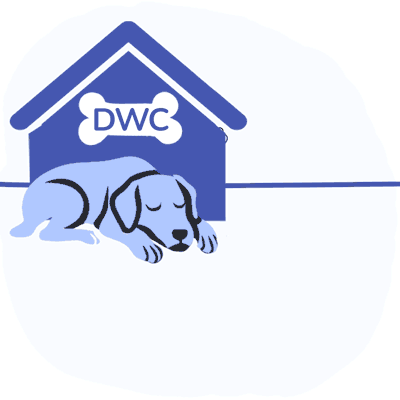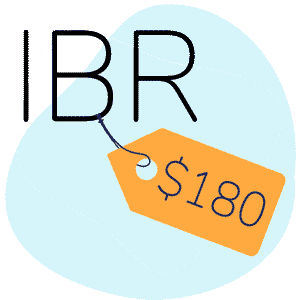CA Providers Routinely Stiffed for IBR Filing Fee

As reported yesterday, California providers' filing fee to request Independent Bill Review (IBR) will increase from $180 to $195 in 2025.
IBR is the process by which the state (represented by private services firm Maximus) resolves disputes initiated by providers over the amount owed for treating an injured worker.
The increase wouldn’t seem bad news for providers on its face; when Maximus rules in the provider’s favor, California law mandates that the claims administrator reimburse the provider the IBR fee.
In theory, it shouldn’t matter if the IBR fee increases since a claims administrator that incorrectly reimburses a provider is on the hook for it.
But in reality, the California Division of Workers’ Compensation (CA DWC), in its apparent deep-seated commitment to inaction, does not enforce the IBR reimbursement law.
Accordingly, in 2025, the $195 fee will effectively be the price providers pay to compel claims administrators to adhere to state fee schedules.
CA DWC Leaves IBR Rules Unenforced
For California workers’ comp providers, getting paid can cost a lot.
In addition to the high practice expenses required to bill for injured workers’ treatment compliantly, providers must currently pay a $180 IBR filing fee for the state intervention necessary when a claims administrator fails to properly reimburse—essentially, providers must pay $180 (and soon, $195) to enforce the Official Medical Fee Schedule.
If the provider prevails in an IBR reimbursement dispute, the claims administrator is not penalized for incorrectly reimbursing the provider. However, California law requires the claims administrator to reimburse the provider the IBR fee paid to dispute the incorrect reimbursement.
California Labor Code Section 4603.6 makes this IBR fee reimbursement requirement clear (the term “employer” is used to refer to the employer’s workers’ comp claims administrator):
“If any additional payment is found owing from the employer to the medical provider, the employer shall reimburse the provider for the fee in addition to the amount found owing.”
Further, per Labor Code Section 4603.2, the claims administrator has 45 days from Maximus’ decision to remit all money owed to the provider, including the IBR filing fee. However, claims administrators consistently neglect to reimburse providers for the IBR fee.
More importantly, the DWC does absolutely nothing (as usual) to enforce this law, which was enacted to protect California providers.
For example, for one daisyCollect client, Third-Party Administrator Sedgwick currently holds the record for the longest-overdue IBR filing fee reimbursement at 1,484 days overdue. Yes, Sedgwick is four years late (and counting) to fully reimburse at least one provider who treated a Federal Express employee.
CA DWC - “C” is for Complicit
True to form, the CA DWC fails to protect providers by offering no feasible mechanism for doctors to pursue missing IBR filing fee reimbursements.
In fact, our experience suggests that the agency's only active role in IBR disputes is to play deus ex machina on behalf of claims administrators, depriving providers of due reimbursement.
As a result, claims administrators play a game we call “IBR Chicken,” which works as follows:
- Deny payment on random (often demonstrably spurious) grounds.
- If the provider submits a timely Second Review appeal on time, deny that (on equally random, spurious grounds)
- If the provider pays $180 and requests IBR, wait for the IBR decision and pay what is owed without penalty or consequences (and refuse to reimburse the provider for the filing fee).
At best, the provider fails to navigate the appeals gauntlet compliantly, and the claims administrator keeps the reimbursement owed by default. At worst, the claims administrator is forced to pay what they always owed (while ignoring the requirement to reimburse the IBR fee with impunity).
Since the DWC has devised a one-sided appeals process that financially rewards claims administrators for improperly reimbursing providers, many providers cannot afford to appeal incorrect reimbursements—which means money in the bank for claims administrators and their private equity owners.
As a result, the 2025 filing fee increase will likely funnel more money from providers’ pockets to claims administrators’ coffers…and the CA DWC apparently doesn’t give a cluck.
With tools for quicker, easier appeals, daisyBill helps your practice demand full reimbursement — with just a few clicks. Learn more or request a demo below:
LEARN MORE
DaisyBill provides content as an insightful service to its readers and clients. It does not offer legal advice and cannot guarantee the accuracy or suitability of its content for a particular purpose.


![Texas: How to Register to Treat Injured Workers [2024 Checklist]](https://kb.daisybill.com/rails/active_storage/blobs/proxy/eyJfcmFpbHMiOnsibWVzc2FnZSI6IkJBaHBBenNGTXc9PSIsImV4cCI6bnVsbCwicHVyIjoiYmxvYl9pZCJ9fQ==--313c5188f4d896eac60be4a26eaf4b4f7ae1bf88/TX-doc-symbols.gif)



